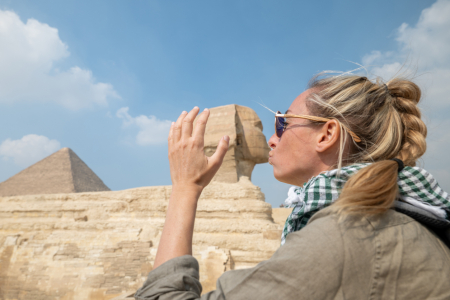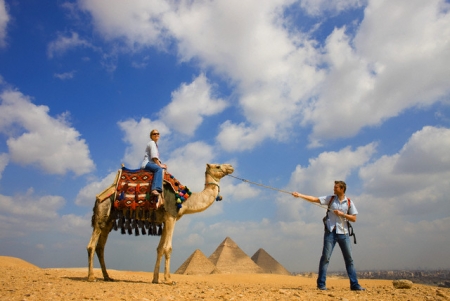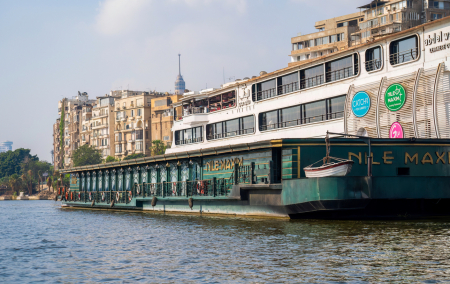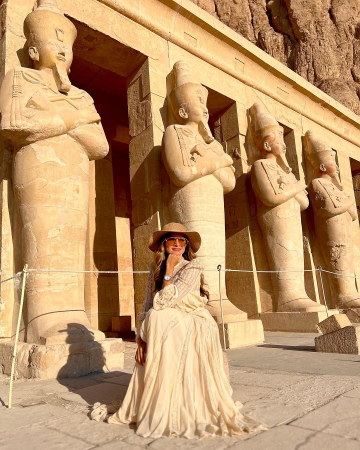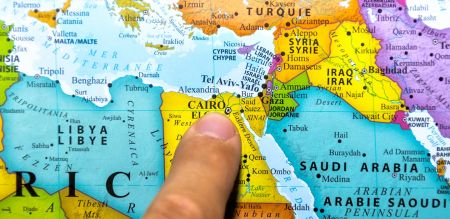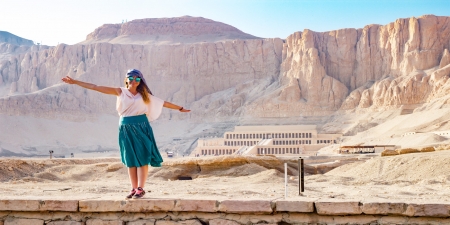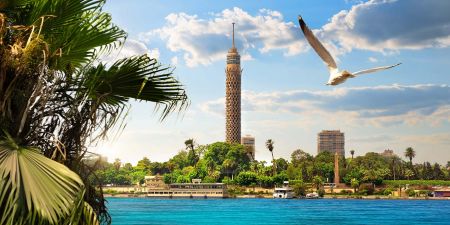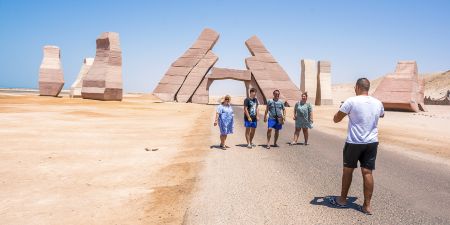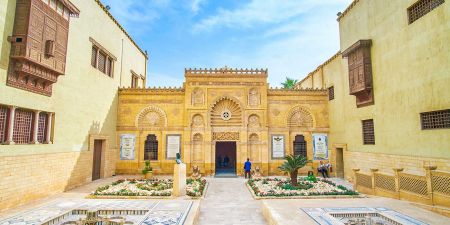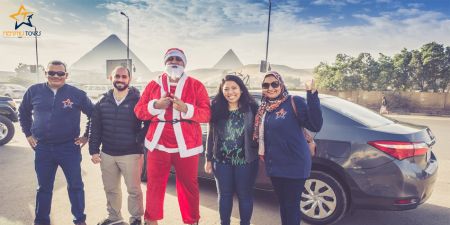Ramadan in Egypt | Ramadan Traditions in Egypt
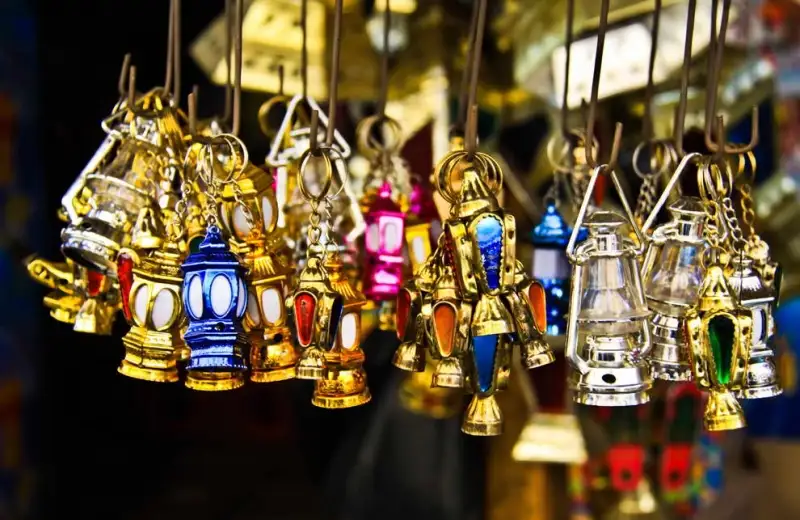
- Ramadan in Egypt
- Ramadan Traditions
- Ramadan Decorations
- The Drummer
- Ramadan Food
- Ramadan’s Drinks
- Ramadan 2020 | Next Ramadan
Egypt’s Spirit in Ramadan
Ramadan is the ninth month of the Muslim lunar year, it is a time of fasting, blessings, and prayers to commemorate the revelation of the first verses of the Qur’an to the Prophet Muhammad by the Holy Spirit Gabriel. It is a time when Muslims refrain from eating during daylight hours as an act of sacrifice that reminds them of the challenges of the poor.
The daily meals become limited to two, the first of which is the “iftar” which is breaking the fasting that takes place immediately with sunset. The timing of the second meal - “sohour” - is variable according to personal preference, but
usually delayed as much as possible until just before dawn. In between “iftar” and “sohour”, people are allowed to eat
and drink liberally.
After breaking the fast at sunset, the city comes to life with different activities, shopping malls and at the hotels, where Ramadan theme tents are set up and folkloric entertainment is held on a nightly basis. Sitting in one of the cafes on the Nile is also very pleasant, where there is light entertainment and good food offered. The mosques are all lit up, shops are open almost all night, the streets are decorated in Ramadan themes, and the food displayed in the shops is the customary offered especially during the holy month.
Egypt has a different flavor during the holy month. As August tends to be a warm month, it is best to plan the schedule where the most famous ancient and religious sites in Egypt are to be covered earlier in the day, followed by museums that tend to open a little later during Ramadan.
As the day gets warmer, the shopping malls such as City Stars in Nasr City suburb or First Mall in Giza, are a delight
to browse around in, where local and famous brand merchandise are displayed in shops, food outlets and other entertainment is available. There you will also find some of the better local handicrafts.
As the evening approaches and the city come to life, visitors should enjoy browsing around the medieval streets of Cairo. Especially streets like Mu’ezz Eddin, Azhar, and Khan El Khalili areas, Fostat in Old Cairo, and the famous gates and walls of Islamic Cairo. Alexandria city also has its atmosphere during Ramadan, where the sidewalk cafes by the sea, a walk on the Corniche, or a visit to Anfoushi - the fishermen’s area - and El Attarin where antique furniture and trinkets are sold, whether you are there, day or night, it is a delight. In the evening, a visit to the famous mosque, Morsi Abul Abbas area where themed decorations are hung everywhere, is a must.
Tailor Make Your Trip To Egypt Now!
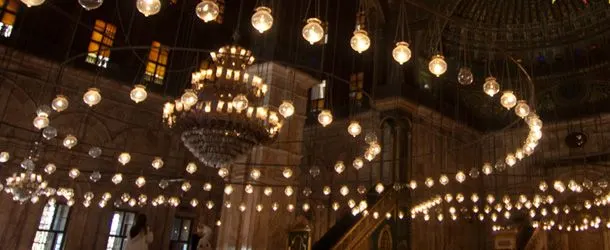
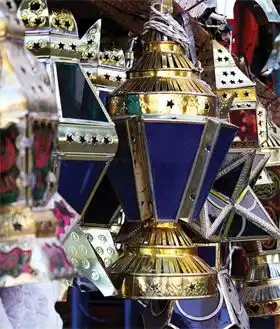
The month of traditions
Ramadan is an inspiring tradition that reflects well on Islam. Muslims give food and money to the poor, as well as to travelers who cannot otherwise stop to eat when it is time to break their fast. Food is supplied by many different groups, including wealthy individuals, restaurants, and other foundations, often setting up tables along the streets for this purpose.
Ramadan is the magical month that is accompanied by all the mysterious customs that have become associated with Ramadan and often has no intrinsic link to religion.
Among those are:
Fanoos Ramadan or Ramadan Lantern
One of the visible sites of the month, that is distinctly an Egyptian tradition, are the colourful lanterns found displayed in many shops. As the month approaches, people buy the lantern to decorate their homes and children expect to get one to play and sing Ramadan songs with, while swinging their glowing lanterns. The lantern is often made from recycled tin cans and most recently there are displayed plastic lanterns that play the latest popular music.
Many stories of its origin have been told. One of the popular stories has it that a Fatimid Caliph wanted to light the streets of Cairo during Ramadan nights, so he ordered all the sheikhs of mosques to hang Fawanees that could be illuminated by candles. As a result, the Fanoos became a custom that has never been abandoned.
To see a large display of “Fanoos Ramadan” and where it is originally made, you should go towards the 11th-century city gate of Bab Zuweillah in the vicinity of the Islamic Museum and next to the Tentmaker’s Bazaar. Part of Ahmad Maher Street where the tinsmiths and marble cutters have their shops is transformed into the Street of Lanterns during the month.
The best Online Antiques Store (Swan Bazaar): Where you can Find the most Unique Egyptian Souvenirs with Top Secured Payment methods and Door to door delivery.
Customize Your Dream Vacation!
Get in touch with our local experts for an unforgettable journey.
Plan Your Trip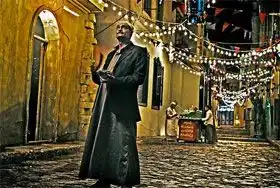
The Drummer
Each morning during the Islamic holy month of Ramadan, an hour or two before dawn, drummers (mesharati) tour the streets, hammering out a repetitive beat to wake people up to have their sohour (pre-dawn meal). This tradition dates back to the Ottoman era when people didn’t have alarm clocks to wake them for sohour, drummers would walk through the streets beating their drums. They would also sing a rhyming couplet -- a reflection of the popular culture.
At the end of Ramadan, the drummers go to houses in their street to ask for money for the wake-up service they provided for the neighborhood during the whole holy month. Almost all phases of the drum-beating tradition, from walking through the streets beating the drum to singing rhyming couplets and collecting money, are still observed. This centuries-old tradition keeps ongoing as it carries the spiritual aspect of the old Ramadan days.
Planning a Trip To Egypt Now? get a quotation now!
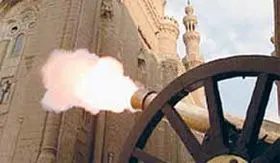
The Cannon and Breaking the Fast
The firing of the cannon from atop the Citadel is a tradition that all Egyptians wait for to break their fast at sunset. It may not be heard today all over, but people still enjoy turning on the television set to watch the cannon being fired before they all sit down to eat. Legend has it that this tradition started by Khedive Mohamed Ali (1805-1848) when he ordered a number of cannons for the Egyptian army, and so it happened that one cannon was accidentally fired during sunset in Ramadan and people then thought that this was a new tradition ordered by the Khedive.
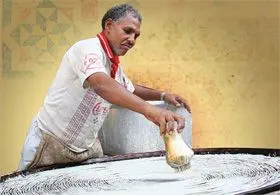
Ramadan Food
Desserts
For some reason, this month is associated with the sweet tooth, where most pastry shops and homes innovate in their creations of desserts.
Among these is the Baklava which is made of Phyllo dough and filled with either nut, cream, or ricotta cheese, The Basboosa with Semolina cake, Konafa with shredded dough, also filled with nuts or cream, and Qatayif is pancake-like dough stuffed with nuts and deep-fried.
One of the interesting scenes during Ramadan is watching the Konafa shop swirl the dough, round and round in a huge round open oven and produce a hair-thin dough.
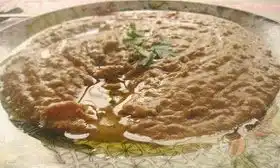
Main Meals
The two most important dishes on the table during Ramadan are the bean dish seasoned with olive oil and garnished with tomatoes and onions.
The other is a soup of any kind. People usually break the fast with soup, since they have been fasting all day and need something light to start the meal with. Also, a medley of dried fruits such as prunes, raisins, and apricot in syrup, is another favorite during Ramadan.
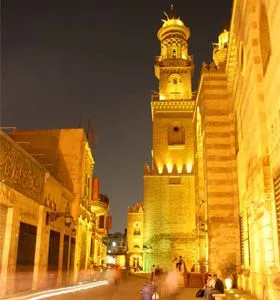
Ramadan’s Drinks
Sweetened Karkadey (hibiscus rose petals), Erq Sous (licorice), Humous (chickpea drink), minted tea, Kamar El Din (dried apricot paste juice), Kharoub (carob), Tamr Hindi (Tamarind), are the prevalent drinks found at most hotels and coffee shops during Ramadan. They are all thirst quenchers and contain a horde of vitamins.
A Walkthrough Cairo
Medieval Cairo is like walking through a time machine where you are transported back to Cairo’s past Islamic heritage with its ancient mosques and forts. This is truly where you feel the spirit of Ramadan.
Where to go
Al Azhar is full of small shops where you will find all kinds of handicrafts from copper, tin, and pottery, a whole carpet market, the tent makers, where you will find interesting designs to take back home, silver and gold jewelry, and many other treasures, besides a visit to the Mosque Madrassa of Al Ghouri and mausoleum, both worth a visit, and the Al Azhar Mosque which is the world’s oldest university.
Wekalet El Ghouri is a complex from the Mamluk era of Egypt that has now been turned into an entertainment place and where visitors can watch local folklore art and concerts in the evenings. This year visitors will enjoy watching the Tannoura show three times a week, as well as a music concert with traditional instruments.
In this area you will also enjoy browsing through the 14th Century Khan El Khalili Bazaar, the oldest and largest covered bazaar now existing. There you can find souvenir shops selling anything from papyrus paper, customized gold and silver cartouches, inlaid boxes, and many other items to take home. During Ramadan, the bazaar is open to almost the early hours of the morning.
There are many ancient sites to visit, some are open during the day only and others such as mosques open in the evenings also. Cairo has some of the most architecturally interesting mosques including Abbasid, Fatimid, Ayyubid Mamluk, and Ottoman styles mostly concentrated in Medieval Islamic Cairo.
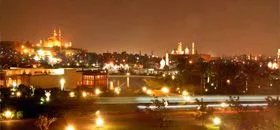
Azhar Park. Not far from the Azhar area is a mega project of a green park that is very well maintained with several food and drink outlets, including the Hilltop Café that offers an excellent view of Cairo. In the evening, El Geneina Theatre located inside the park offers good entertainment from local and foreign artists. Rock music, Hip Hop and Rap, vocalists, and poetry, are offered there.
However, during Ramadan, local folklore, plus folklore from Lebanon, Palestine, Jordan, and Morocco will be the main entertainment
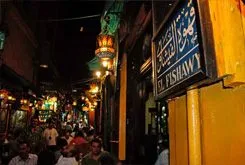
Fishawy Cafe Visitors should take advantage of being in the Azhar area during Ramadan and experience this famous two-century-old café. Waiters balancing trays of minted tea and the clanging of glasses that is part of the fun, while sitting and watching passersby at a traditional Egyptian café.
Al Hussein in Azhar That may be an experience on its own, walking through the area with the shops open all night, watching people enjoying life after breaking the fast, and experiencing the taste of feteer (Egyptian pancakes) at the Pancake shop served with sugar and honey or with several kinds of cheese.
Darb al-Ahmar (Red Road) This area of Islamic Cairo was built in the late Mamluk era and this is one of the finest examples of the era’s architecture. Though plain on the outside, inside are wonderful stained glass windows, inlaid marble floors, and stucco walls.
Ramadan on the Nile Many of the open-air cafes is a fun places to spend the evening where there is light entertainment and snacks with a spectacular view. Among those would be Kholkhal and Rotana Cafes in front of the Cairo Marriott Hotel, The Blue Nile Boat, Sequoia in Zamalek, Sangria in Maspero, Le Pacha Boat in Zamalek, and Saraya. Besides, some of the major hotels have their Ramadanthemed cafes directly on the Nile, as well as tents where traditional food and drinks, and entertainment are offered.
A lot of tourists prefer to book Cruise in the Nile During Ramadan, the Nile Cruise sail from Luxor to Aswan visiting the top attractions
Islamic Style Houses in Medieval Cairo to visit
Beit Al Razzaz, in Darb Al Ahmar, was constructed from the late 15th century through the late 18th century. Eighteenth-century Beit Al Suhaymi in Gamalia is the finest example of the Ottoman-era house now turned museum and originally built in 1648. Beit El Kritliyya which is the only fully furnished Arabic house in original pieces in Islamic Cairo. Beit El Harrawi built-in 1731 is considered to be one of the fine examples of the Islamic houses representing the Ottoman Era, and Beit Sit Wasila next to El Harrawi is a 17th-century example. Beit Zeinab Khatoun in Azhar built at the end of the 14th century, is a remarkable house to visit, and Prince Taz Palace located on Suffiya Street is an example of a house in the Mamluk Era. Beit Gamal ad-Din built-in 1637 is typical of Cairo’s upper class of the 17th century.
Al-Muizz El-Din Allah Street
This street is named after the Fatimid Caliph who conquered Cairo in 969 AD and it was once the main route of this period where people used to enter the road from Bab Zuweila in the south and exit through Bab El Futuh in the north. Recently renovated and becoming a pedestrian street, it is a delight to walk through, day or night, and one of the most historical, representing Cairo’s largest open-air museum of Islamic and medieval monuments where there are many monuments on the street to view besides Islamic edifices found along its neighboring alleys, including several important mosques and Sabils.
Not to miss on that street is the Textile Museum which displays 250 textile pieces and 15 carpets dating from the late Pharaonic era through Coptic and Islamic eras, including clothes from various times in the Islamic era.
Tailor Make Your Trip To Egypt Now!
Pastry shops and homes innovate with desserts like Baklava and Konafa. Thirst-quenching drinks like Karkadey and Tamr Hindi can be found at most hotels and coffee shops.
Visitors should explore the medieval streets of Cairo like Mu’ezz Eddin, Azhar, and Khan El Khalili, where shops are open all night. You can also enjoy cafes on the Nile with light entertainment.
In Alexandria, you can enjoy the atmosphere by visiting sidewalk cafes by the sea, walking on the Corniche, or exploring the Morsi Abul Abbas area, which is decorated for the month.
For a large display of Fanoos and to see where they are originally made, you should visit the area near the 11th-century city gate of Bab Zuweillah in Cairo.
It is best to visit the most famous ancient and religious sites earlier in the day, followed by museums, which tend to open a little later during the holy month.

